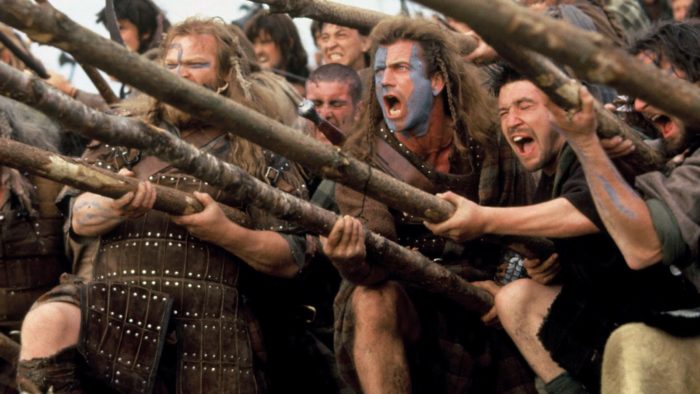
Six Forms of Empathy and Sympathy
by Mathew Allen
Emotion lies at the heart of the filmic experience, and people always talk about how to make characters relatable or likeable. Below are six techniques each for building empathy and sympathy in your scripts. I believe this to be an exhaustive and refined list—both in that it covers every possible kind of empathy and sympathy and that each of the twelve tools is useful in of itself, separate from the others.
For most people, empathy and sympathy are interchangeable terms. But, for the purposes of this article, I’m going to be using a definitional distinction sometimes used in relation to screenwriting: Empathy, for the purpose of this article, is defined as something that one feels for either good or bad characters. Sympathy, on the other hand, is reserved for good guys only. So, for a good character, you’re going to need at least one from each of the two columns below; for a bad guy, just one from the Empathy column will suffice:
Tools for Achieving Empathy
Cool – This is like James Bond. Hard to define, but you know it when you see it.
Effort – This is about characters failing and getting back up again. Over and over.
Funny – This is basic comedy. To be deliciously evil, a bad guy must also be funny.
Philosophy – This, I got from Syd Field. A bad guy will often expound on a philosophy of life, thus making them unique and interesting.
Power – This relates to someone being exceptionally skilled or, as the name says, powerful.
Trickster – This is like the Loki archetype from Norse mythology.
Tools for Achieving Sympathy
Bullying – This is a basic rule that a character who is persecuted by a more powerful entity is good, and the one who persecutes them is bad. For the sake of this analysis, it also applies to characters being bullied by fate or nature.
Community Support – This relates to the whole village rallying ‘round our hero, thus making them a hero in our eyes.
Family – This is about characters being shown experiencing warm moments with their loved ones or, conversely, seeing their loved ones in peril.
Noblesse Oblige – This is what Blake Snyder calls “save the cat”. I opt for different terminology here as many use “save the cat” in such a broad sense that it encompasses several of these six forms of selfless sympathy I’ve delineated. At any rate, it’s basically when a more powerful character does something nice for a less powerful one, something they really didn’t have to do.
Nostalgia – This, as the name suggests, is about characters reminiscing about their past.
Self-sacrifice – This is perhaps the ultimate tearjerker in terms of evoking sympathy.
Next, according to Aristotle’s theory of catharsis, you’re going to have to pair at least one of the six sympathy tools with both Dramatic Irony/Subtext and Effort—in order to really tug at your audience’s heart strings. So, let’s look at a few examples of these principles at work:
Robin Hood: Prince of Thieves – At the end of this film, Sean Connery turns up and pretends to want to object to Kevin Costner’s wedding. It’s just a joke though, and so a king (a more powerful character) condescends (in the positive sense of the word) to give away the bride in a chivalric expression of Noblesse Oblige. In addition, due to Connery’s ruse, his noble action is masked by Subtext; were he to simply say that he was a nice king and wanting to help out, it wouldn’t work so well.
Forest Gump – At the start of this film, Tom Hanks is the victim of Bullying that quickly leads to him becoming a star player on the local football team, thus earning him both Community Support in the form of a cheering crowd and Noblesse Oblige in terms of grudging respect from the coach. In addition, the emotion (and comedy) is heightened by the Dramatic Irony of Hanks not knowing when to stop running.
Stand By Me – At the end of Stand By Me, Richard Dreyfuss reminisces over River Phoenix having been killed when he tried to stop a fight (Noblesse Oblige). And then his Nostalgia is interrupted by his son wanting to play. So, the film ends on a note of Family—as he moves on with his life.
Casino – Casino is an unusual case in that it’s a gangster film. In the gangster genre, there are no good guys. And so a hero is defined by being less bad than all of the scum around him or her. Joe Pesci’s character has Family moments with both his son, when he makes him breakfast, and brother, when he’s forced to watch him being beaten to death.
Braveheart – The ending of this film is the ultimate combo-deal whammy. You’ve got Bullying, Community Support, Effort, Family, and Self-Sacrifice, with an extra dash of Dramatic Irony thrown in for good effect—all used in combination to ensure there’s not a dry eye in the house. Think about it: You’ve got a guy who’s worked really, really hard to achieve his goal of independence (Effort), only to be tortured (Bullying), and resist the temptation to give in (Self-Sacrifice), while his comrades secretly watch (Dramatic Irony) from a crowd that ends up taking his side (Community Support), while his dead wife walks through them (Family).
Of course, in addition to this, it’s the music that really sells an emotional scene; that being said, without these core story elements, my contention is that the music alone would not trigger tears (at least on the first viewing). Would you really cheer for Mel Gibson if he were presented as a bully and not one who is bullied?
So, that’s my theory. Please comment and debate me on it—especially if you feel like there’s a case of empathy/sympathy I’ve missed, or one that otherwise doesn’t fit into this model. It’s a work in progress, and is designed to be falsifiable, so please have at it!
